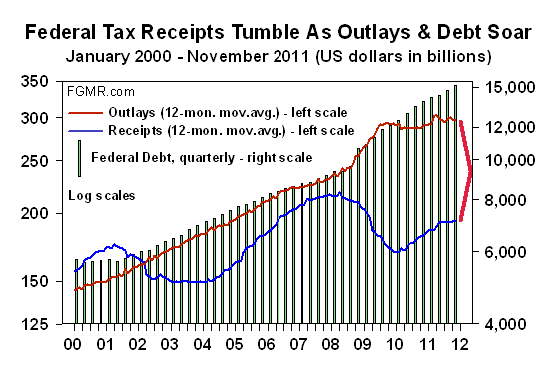December 19, 2011 – In the first two months of the current fiscal year that began on October 1st, the US national debt has grown $320 billion. That is $21 billion more than the same 2-month period last year, which illustrates that the growth of the national debt continues to accelerate. The reason of course is the federal government’s huge operating deficit, which is not getting any smaller. This point is illustrated in the following chart.

Hyperinflation is always the outcome of unchecked government spending. The spending leads to ever greater deficits, which requires the government to borrow ever greater amounts of money. Eventually a point is reached when the government needs to borrow more money than lenders have the capacity – or willingness – to lend. Thereafter the government can take either of two alternative paths.

No comments:
Post a Comment